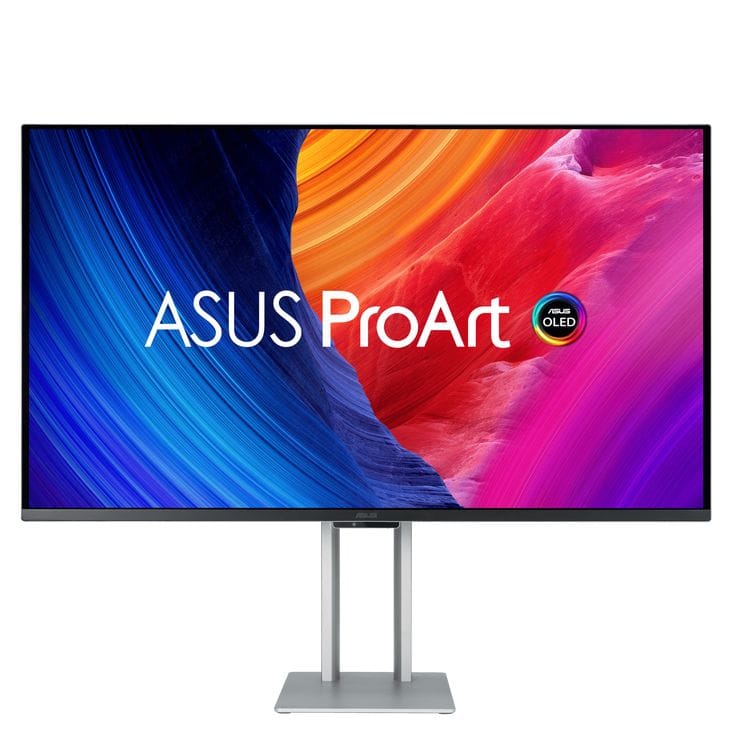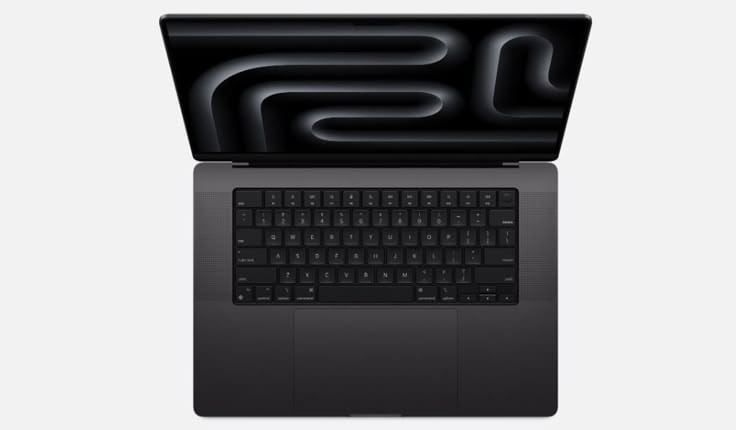Choosing The Right Display Type For Creative Professionals
A top-tier display is crucial for creators, ensuring sharp resolution, accurate colors, wide gamut, and optimal brightness for consistent, professional work.

For graphic designers, video editors, and photo editors, a high-quality display is not just a luxury, it's a necessity. Their work revolves around visual accuracy, detail precision, and colour consistency, making it essential to have a screen that can reproduce colours faithfully while maintaining sharpness.
- Colour Accuracy & Consistency:
Visual creatives need their designs and edits to look consistent across different screens and printed media. A poorly calibrated display can distort colours, leading to mismatches when the final product is viewed elsewhere. This is especially critical for branding, advertising, and professional photography, where even slight deviations in hues can impact perception. - High Resolution for Precision Editing:
Whether it's photo retouching, video grading, or vector design, high-resolution screens (such as 4K or higher) allow professionals to see fine details without pixelation. The ability to zoom into an image without losing clarity ensures better refinement in visual elements. - Wide Colour Gamut for Richer Representation:
Different industries rely on specific colour standards like sRGB (web content), Adobe RGB (print media), and DCI-P3 (film production). A laptop with a wide color gamut ensures true-to-life colours, making the visuals pop while maintaining accuracy. - Brightness & Contrast for Realistic Viewing:
A screen with high brightness (above 400 nits) and HDR support helps artists work in various lighting conditions. Deep blacks, vibrant highlights, and correct contrast ratios make the editing process smoother, especially for color grading and cinematic edits.
In short, a high-quality display is the foundation of professional creative work—it ensures precision, consistency, and reliability across different platforms.
Key Features To Look For A Screen In A Laptop
As most of the professionals start with a laptop, when choosing a laptop, the display is one of the most critical factors for professionals in graphic design, video editing, and photography. A high-quality screen ensures accurate colour reproduction, sharp resolution, and smooth performance for visual work. The right panel type can significantly impact color consistency and viewing angles. Resolution matters, with Quad HD or 4K preferred for precise edits. A wide colour gamut (sRGB, Adobe RGB, DCI-P3) guarantees vibrant hues. Additionally, brightness levels and refresh rates affect clarity and fluidity, making HDR and 120Hz screens ideal for motion graphics and creative tasks.
Panel Type:
Resolution:
Colour Accuracy & Gamut:
- sRGB: Standard colour space used for web and digital content.
- Adobe RGB: Wider gamut, preferred for print media.
- DCI-P3: Used in film and video production.
- Rec. 709: Standard for HDTV color accuracy.
Brightness & Contrast:
- 300-500 nits: Ideal for indoor use.
- HDR support: Enhances dynamic range for better contrast.
Refresh Rate:
- 60Hz: Standard for most creative work.
- 120Hz+: Useful for animation and motion graphics.
Understanding Colour Accuracy
Colour accuracy refers to how precisely a display reproduces colors as they are intended to appear. It is crucial for professionals like graphic designers, video editors, and photographers, who rely on accurate color representation to ensure their work looks consistent across different devices and in printed media. It is measured using Delta E (ΔE), where:
- ΔE < 2: Excellent colour accuracy.
- ΔE 2-5: Good for general use.
- ΔE > 5: Noticeable color deviation.
Colour accuracy is crucial for creative professionals because:
- It ensures consistent colors across different devices.
- It prevents color mismatches in print and digital media.
- It maintains brand identity for designers working with logos and marketing materials.
Best Laptops for Creators
Here are some top choices available in India with their specifications and prices:
| Laptop | Processor | RAM & Storage | Display | Price (INR) |
|---|---|---|---|---|
| Apple MacBook Pro M3 Pro | Apple M4 Pro | 16GB RAM, 512GB SSD | 16" Liquid Retina XDR, 1000 nits, P3 color gamut | ₹1,99,900+ |
| ASUS ProArt Studiobook 16 OLED | AMD Ryzen 9 5900HX | 32GB RAM, 1TB SSD | 16" 4K OLED, 100% DCI-P3 | ₹1,89,990+ |
| Dell XPS 15 (2024) | Intel Core i9-13900H | 32GB RAM, 1TB SSD | 15.6" 4K OLED, 100% Adobe RGB | ₹2,10,000+ |
| HP Spectre x360 16 | Intel Core i7-13700H | 16GB RAM, 1TB SSD | 16" 3K OLED, 100% DCI-P3 | ₹1,79,990+ |
| Lenovo Yoga Pro 9i | Intel Core i9-13905H | 32GB RAM, 1TB SSD | 16" 3K Mini-LED, 100% Adobe RGB | ₹1,99,990+ |
Best Laptops for Creators – Explained
Each of these laptops offers a high-quality display, powerful performance, and excellent colour accuracy, making them ideal for graphic designers, video editors, and photo editors. Here's why each stands out:
- Apple's Liquid Retina XDR display delivers exceptional color accuracy, deep contrast, and 1000 nits of brightness, perfect for professional photo and video editing.
- The M3 Pro chip ensures efficient rendering and smooth performance for high-resolution workflows.
ASUS ProArt Studiobook 16 OLED
- A 4K OLED panel with 100% DCI-P3 coverage makes it a top choice for filmmakers and video color grading.
- The Ryzen 9 processor and 32GB RAM offer seamless multitasking and raw processing power for demanding creative applications.
- 4K OLED screen with 100% Adobe RGB ensures perfect color reproduction for print designers and photographers.
- Intel i9-13900H and 32GB RAM provide incredible speed for editing large files, while the sleek design makes it ultra-portable.
- A convertible laptop with a 3K OLED display, making it great for illustrators, motion graphics designers, and creative professionals who need flexibility.
- 100% DCI-P3 coverage and stylus support enhance precision for digital artists.
- 3K Mini-LED screen with full Adobe RGB coverage, ensuring perfect accuracy for photographers and graphic designers working with highly detailed visuals.
- The Intel i9-13905H and 32GB RAM make it a powerhouse for video editing and animation.
Why Creators Prefer MacBooks for Display Quality
Many creative professionals such as graphic designers, video editors, and photographers opt for MacBooks despite their premium pricing. One of the primary reasons is the exceptional display quality, which plays a crucial role in color accuracy, resolution, and visual consistency.

1. Industry-Leading Retina & Liquid Retina XDR Displays
Apple’s Liquid Retina XDR screens provide:
- High resolution (2560x1600 for MacBook Air & up to 3456x2234 for MacBook Pro 16")—delivering sharp, detailed visuals.
- Extreme dynamic range (XDR) with 1000 nits sustained brightness (1600 nits peak) for accurate HDR workflows, crucial for filmmakers.
- Mini-LED technology, offering deep blacks and better contrast, improving color grading precision.
2. Superior Color Accuracy & Gamut Coverage
MacBooks come factory-calibrated with near-perfect color accuracy:
- P3 Wide Colour Gamut ensures richer, more vibrant colors compared to standard sRGB.
- True Tone Technology adjusts color temperature dynamically for more natural-looking visuals.
- HDR and 10-bit color depth support more shades and gradients, useful for photo editing & video production.
3. Seamless Integration for Creative Workflows
MacBooks offer consistent display performance across apps like:
- Final Cut Pro, Adobe Photoshop, DaVinci Resolve, and Lightroom, where color precision is critical.
- macOS optimizations ensure better scaling, font clarity, and accurate rendering of UI elements, making creative work smoother.
Despite being expensive, MacBook displays are trusted for their professional-grade accuracy, consistency, and long-term reliability, making them a top choice for creators.
Exploring The Budget Options
If a laptop's display lacks colour accuracy, resolution, or brightness, connecting a high-quality external monitor can be a great solution for graphic designers, video editors, and photographers.
Why Use an External Monitor?
- Better Colour Accuracy – Professional monitors offer factory calibration, ensuring colours look consistent across different devices.
- Higher Resolution – 4K or 5K displays allow for precise editing with sharp details.
- Wide Colour Gamut – Monitors with Adobe RGB, DCI-P3, or sRGB provide more accurate colour reproduction.
- HDR Support – Improves contrast and highlights, making it ideal for video grading.
- Larger Screen Size – 27” or 32” displays give more workspace for editing tools.
Best Monitors Under ₹25,000 INR
| Monitor | Resolution | Panel Type | Color Accuracy | Price (INR) |
|---|---|---|---|---|
| BenQ GW2790 | 1920x1080 (FHD) | IPS | 99% sRGB | ₹10,470+ |
| LG 27U631A-B | 2560x1440 (QHD) | IPS | 1000:1 Contrast Ratio | ₹16,499+ |
| MSI PRO MP273QW | 2560x1440 (QHD) | IPS | 1.07B Colors | ₹18,711+ |
| Samsung ViewFinity S6 LS27F610EAWXXL | 2560x1440 (QHD) | IPS | 1000:1 Contrast Ratio | ₹17,524+ |
| Acer SA272U G | 2560x1440 (QHD) | IPS | 1000:1 Contrast Ratio | ₹13,990+ |
Connecting an external monitor via HDMI, DisplayPort, or Thunderbolt can instantly upgrade a laptop’s display quality and enhance workflow efficiency. Here are the advantages of each monitor:
- BenQ GW2790 – Excellent 99% sRGB color accuracy with an affordable price, making it ideal for beginner-level creative work.
- LG 27U631A-B – Quad HD resolution enhances sharpness and clarity, improving productivity for designers and video editors.
- MSI PRO MP273QW – Supports 1.07 billion colors, delivering vibrant and accurate visuals for photo and graphic editing.
- Samsung ViewFinity S6 LS27F610EAWXXL – High contrast ratio improves depth and details, great for creative professionals working with visuals.
- Acer SA272U G – Budget-friendly QHD display with IPS technology for good colour consistency and wide viewing angles.
Conclusion
A high-quality display is a fundamental tool for any creative professional—be it a graphic designer, video editor, or photographer. The right screen ensures accurate color reproduction, sharp resolution, wide color gamut, and proper brightness levels, all of which are essential for producing consistent, professional-grade work.
While MacBooks with Liquid Retina XDR displays are a top choice due to their factory-calibrated color accuracy and seamless macOS integration, many Windows laptops with OLED or Mini-LED screens now offer competitive alternatives. Additionally, for creators whose laptops lack a colour-accurate screen, investing in an external monitor is an excellent solution.
For beginners, budget monitors under ₹25,000 INR provide a great starting point—offering good resolution, decent colour accuracy, and IPS panels that ensure better viewing angles and consistency. Options like the BenQ GW2790, LG 27U631A-B, and MSI PRO MP273QW provide sharp displays with 99% sRGB coverage, making them ideal for learning digital art, video editing, and photography without spending a fortune.
Ultimately, whether you're a beginner or a seasoned professional, choosing the right display—whether built into your laptop or added externally—ensures precision, reliability, and visual excellence in every creative project.




